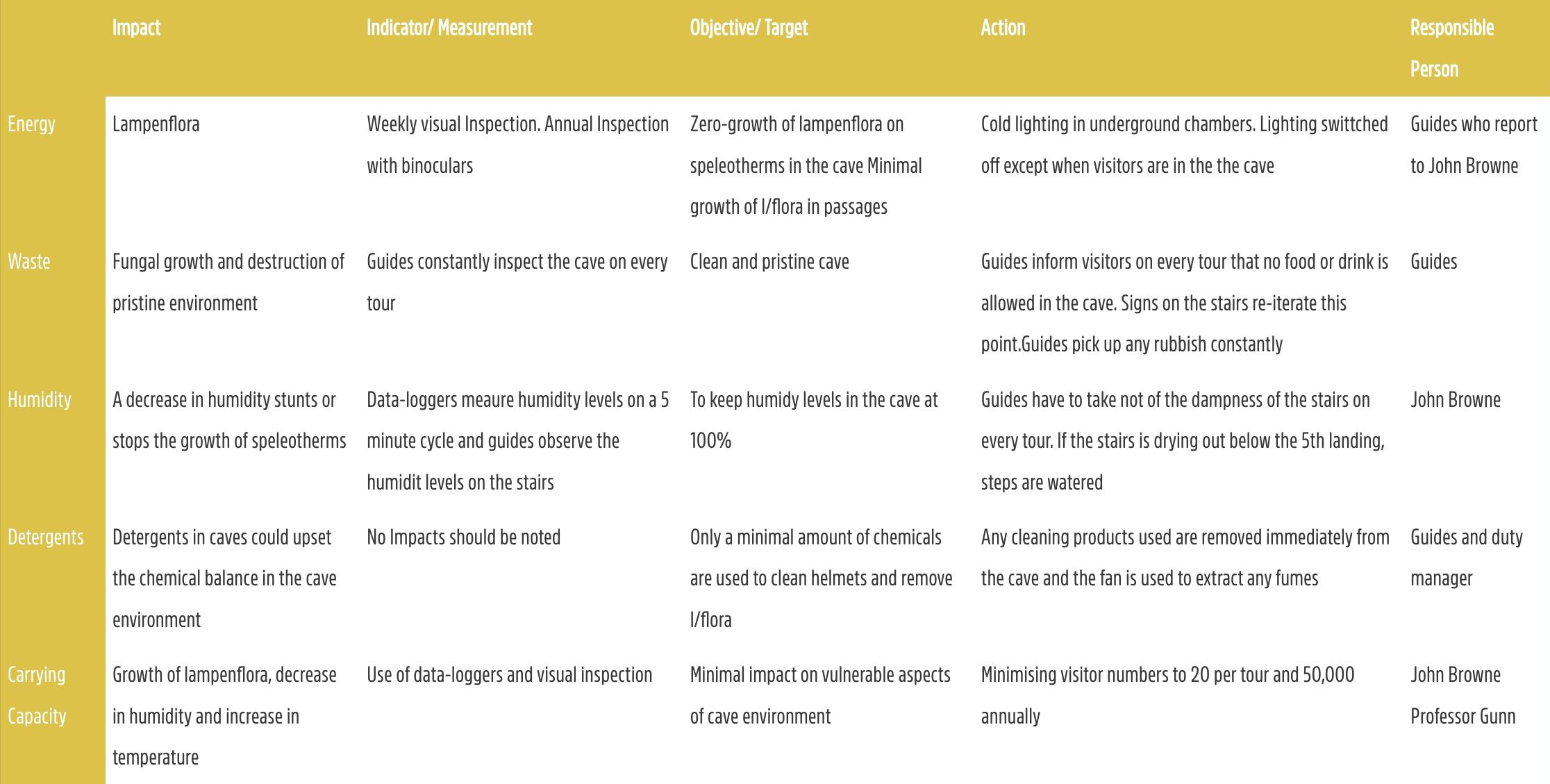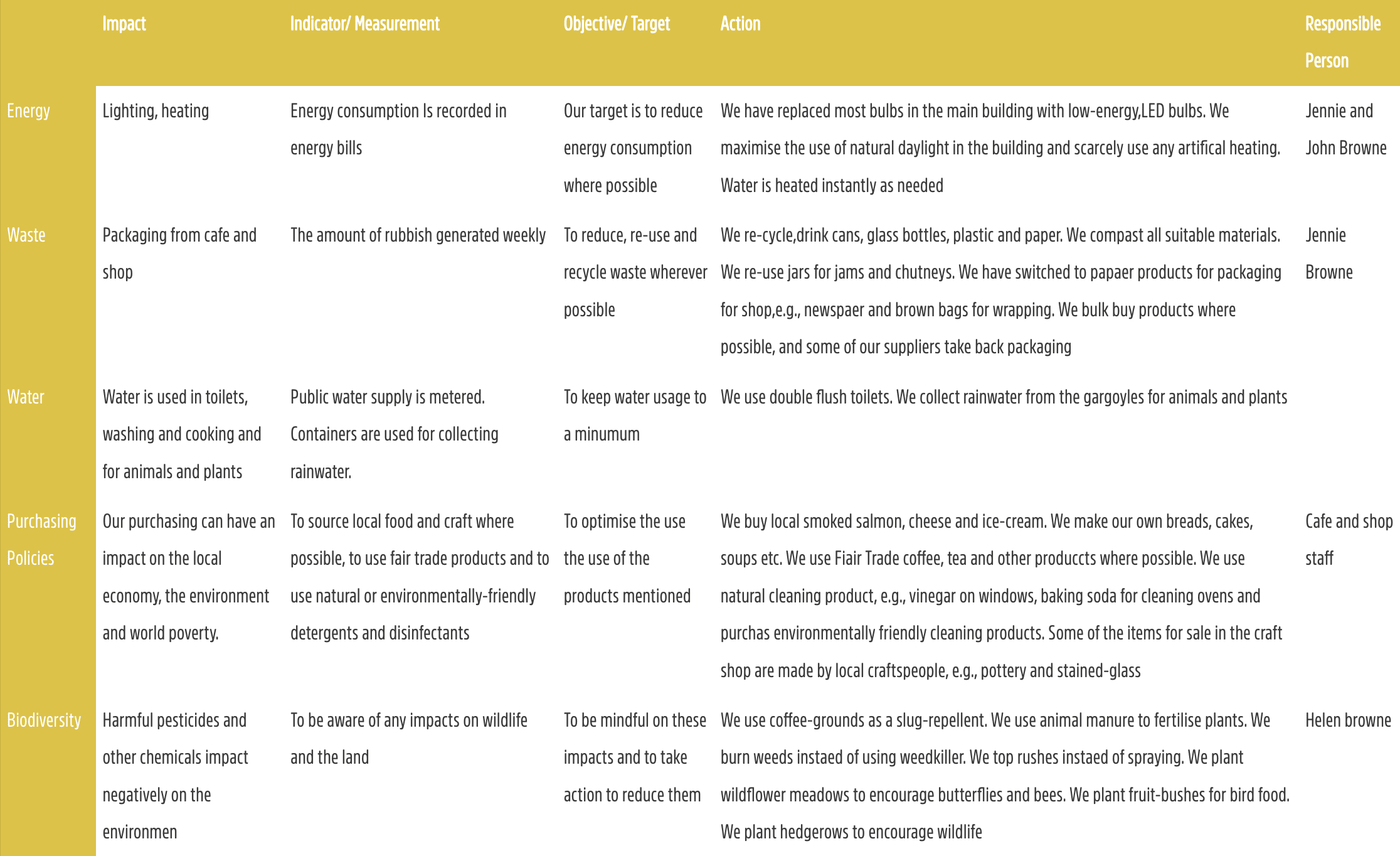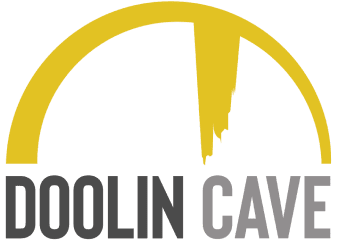Environmental Policy
Mission Statement: We aim to protect the complex underground and overground environment at Doolin Cave and to minimise and manage any adverse impacts on the cave climate arising from its operation as a showcave. We are committed to energy efficiency, waste reduction and recycling.We also aim to educate our visitors on cave conservation and the delicate landscape of where it’s situated.
- Underground Environmental Policy:
Cave Management:
The Great Stalactite at Doolin Cave is the largest free-hanging stalactite accessible to the public anywhere in the world, so it is vital that all possible measures are taken to protect the delicate nature of the cave environment. Because of this, the main aim of our policy is conservation of the cave system. This entails constant monitoring of temperature, humidity, co2 levels, radon and the avoidance of lampenflora in the cave. Professor John Gunn a geologist with the Limestone Reserch consutancy has installed and monitors data loggers which measure all these elements.
The data loggers record information every 5 minutes. His yearly report which forms part of our Cave Managment Plan ( see Appendix 1) is lodged with the planning section of Clare Co Council.
Any negitave impacts that are detected are acted upon as per our CMP.
Environmental Impacts
(a) Energy
Cave Lighting
Lampenflora is the result of spores being brought into the cave on peoples’ shoes and clothes. The spores then react to UV light and high temperatures, this leads to moss growing in the cave.
In order to avoid the growth of lampen flora particularly on the Great Stalactite,we use cold lighting in the underground chambers and lights are only switched on when tours are actually in the chambers
Part of our cave tour informs visitors about the measures that we have put in place to protect ther Cave and stalactite.
Visitor numbers are limited to 20 per tour and anually to 55,000 in order to negate any adverse impacts.
(b) Waste:
One of the threats to the cave environment is rubbish brought into the cave by visitors. Any foreign matter deposited in caves takes a lot longer to disintegrate underground than it would overground. Food deposits particularly, cause fungal growth which destroys the pristine environment and lingers indefinitely
(c) Humidity
The humidity level in the cave should alway be 100%. This is to ensure that the calcite formation in the cave grow at an optimum level. On of the main adverse effects of opening wild cave to the public as showcaves is the reduction in humidity levels due to the heat of the human body. This reduces the rate of growth of calcite and in extreme caes, e.g., with too many visitors, they cease to grow entirely.
(d) Use of Detergents
The use of detergents has to be strictly monitored in order not to impact on the ground water in the cave. Introducing any chemicals into the cave system could have a adverse effect.
Although the use of detergents is discouraged in caves, we have found that we must use disinfectant to sanitize the helmets that we provide for our visitors safety.
We also have to use use a very weak bleach sollution to erdadicate any lampenflora that may grow in the cave.
(e) Carrying Capacity
Carefull consideration has to be given to the sustainabililty of the cave system and so the number of visitors has to be monitored in this regard. Excessive numbers would lower the humidty, increase the tempature and introduce alien organisms and pollutants.

- Overground Environmental Policy:
Visitor Centre and Eco-trail Management:
Our aim is to minimise any negative impacts on the environment. This is particularly important at Doolin Cave because as well as impacting on the general environment, any actions in the overground activities of the business could impact negatively on the underground, so we have to doubly careful. Our policy is to reduce, re-use and recycle materials used in the business. We are continually trying to improve the running of the business in order to minimise any impacts either over-ground or under-ground. At the beginning of each season, we go through a checklist on ways to improve the running of the business including way of doing this in an environmentally-friendly manner. Our cafe is in compliance with the HSE Environmental Health Policy and HASSP. We ensure that all of our activities at the cave are in compliance with Planning Permission. Our sewage system is tested annually by Bord na Mona. All or animals are inspected as per regulations of the Dept. Of Agriculture.
In the design of the Visitor Centre the architects’ brief was to provide a bespoke visitors’ reception building for Doolin Cave that would be sympathetic to the existing underground and over-ground landscape.
To create an indoor-outdoor space, with maybe one or more sides open to the weather, that would move people, with special emphasis in sustainable design, eco-friendly materials and would be low / neutral carbon emission. Finally, to produce a design that would be ‘reclaimed’ by the natural surroundings over time.
With the majestic Ivy Cliff as its guardian, the design approach aimed at generating a contemporary building that would blend in and disappear within the existing hills below.
Internally, as the cave itself, the space would be ‘shaped by the water’ and all materials introduced would be kept in the natural state where possible to appreciate their ‘honesty’, their sculptural qualities.
Externally, the use of local stone for the walls was proposed to emulate the ivy cliffs’, complemented by a green roof as a continuation of the existing hills.
The transparency of the glazed café seating area would also integrate with the existing landscape, allowing the visitor to enjoy the surrounding views to the cliff, Ballinalacken Castle and the hills.
The selection of materials specified reflects and integrates with the characteristics of the site and its surroundings.
The area of the green roof follows and slightly exceeds that of the footprint of the new building, with the objective of replacing the ecology that the development stands on.
In this same fashion, all external ancillary spaces have generally been executed with soft permeable landscaping, as a way of minimising the disruption to the existing environment (e.g.: gravel / permeable flagstones).
The green roof, at the same time as providing shelter and insulation for the premises, also absorbs the rainwater reducing the storm water runoff and creates a natural habitat for local wildlife.
This roof contributes to the reduction of heat loss and energy consumption in winter conditions, reduces cooling loads and provides sound insulation.
The interstices of the external stonewall also contribute to generate a favourable surface for the development of local species such as the ivy on the neighbouring cliffs.
Internally, the materials were kept in their most natural way possible.
With the exception of the services areas (kitchen and WCs, for hygienic reasons), the finishes were kept to a minimum, having been considered both from an economical and a sustainable point of view.
A concrete wall with exposed limestone aggregate reminiscent of the natural walls of the cave, forms the main exhibition area and directs the eye and the flow of the public towards the external entrance of the cave at the back of the building, while walking you through the history of the discovery of the stalactite through explanatory graphic panels.
A smooth sealed concrete floor for all the main areas unifies all of these into a sequence of fluent spaces interacting with each other. It also provides an effective response to its use with a hard and durable surface (public will transit these areas with the same footwear they have used to access the damp floor of the cave below). The WCs have been tiled for hygienic purposes and dual flush appliances contribute to the sustainability element of the overall building brief.
The Eco-trail features rare and heritage breeds of cattle, sheep, goats and farmyard fowl. Our aim is to let visitors see these breeds which in some cases are almost extinct in their natural environment. We have planted native and indigenous species of trees and shrubs and wildflower meadows in order to preserve the species that were once natural to this landscape. All visitors are given a handout which informs them of the importance of these plants and animals to the biodiversity of the area
With regard to deliveries to the cafe, we have come to an arrangement with our suppliers that all packaging is taken back to cut down on waste. Glass jars are re-cycled for making jams and chutneys. We are continually eliminating packaging of supplies for the cafe. All cleaning products are environmentally-friendly
Environmental Impacts:
(a) Energy:
Energy use in the visitor centre is mainly electrical in the operation of lighting and kitchen equipment. As regards the internal lighting it has been specified and designed to provide an energy efficient system for all areas within the Visitor Centre. This has been achieved by a combination of energy efficient fittings and by zoning the lighting controls to manage the lighting levels required dependant on the season, time of day, and the area of the building. Although kitchen equipment, by its very nature uses energy, we try to minimise this as much as possible, but in order to comply with hygiene rules we have to consume a certain amount of energy. We have a carbon offsetting programme where we have planted 400 native trees such as ash, oak, alder and shrubs such as whitethorn, blackthorn, hazel, wild cherry and dog-rose which generate oxygen and reduce our Carbon footprint
(b) Waste:
Waste generated by the operation of cafe, shop, etc comes mainly from packaging from deliveries to the cafe and the shop and food stuffs from the kitchen. As we operate a ‘reduce, re-use and recycle ‘ policy we continually try to improve on ways of doing this. We bulk buy in order to reduce packaging and have an arrangement with some of our suppliers to take back packaging on delivery.
(c) Water:
We monitor water usage constantly and try to find ways of reducing it. We use double-flush toilets, rain water is used to feed animals and water plants. Our building is plumbed to be dual-operated to use collected rain water from the gargoyles for the toilets. Our staff are trained to be conscious of water conservation, e.g., taking care that taps are off, etc.
(d) Purchasing policy:
We are aware of the negative impact of chemicals found on detergents, etc on the environment and are continuously trying to improve on this. We use environmentally-friendly and natural cleaning products. We buy fair-trade products where possible and in the cafe we try to source ingredients locally where possible
(e) Impacts on biodiversity:
We are aware of the the possible negative impacts of chemicals contained in pesticides manure, etc on the eco-trail. We have put measure in place to counteract these impacts,
e.g., we use coffee-grounds as slug repellent, natural manure from the animals as fertiliser and natural methods of weed killers.

We have identifed all the impacts surrounding our buisness and we have plans put into operation to offset these. Our staff have been trained on the importance of conservation and the practices that we have put in place. They are encouraged at all times to pass on as much information to our visitors. We review our enviromental policy annually and our staff are encouarged to suggest new ways to run the buisness sustainably. They often offer opions on comments by our visitors.

